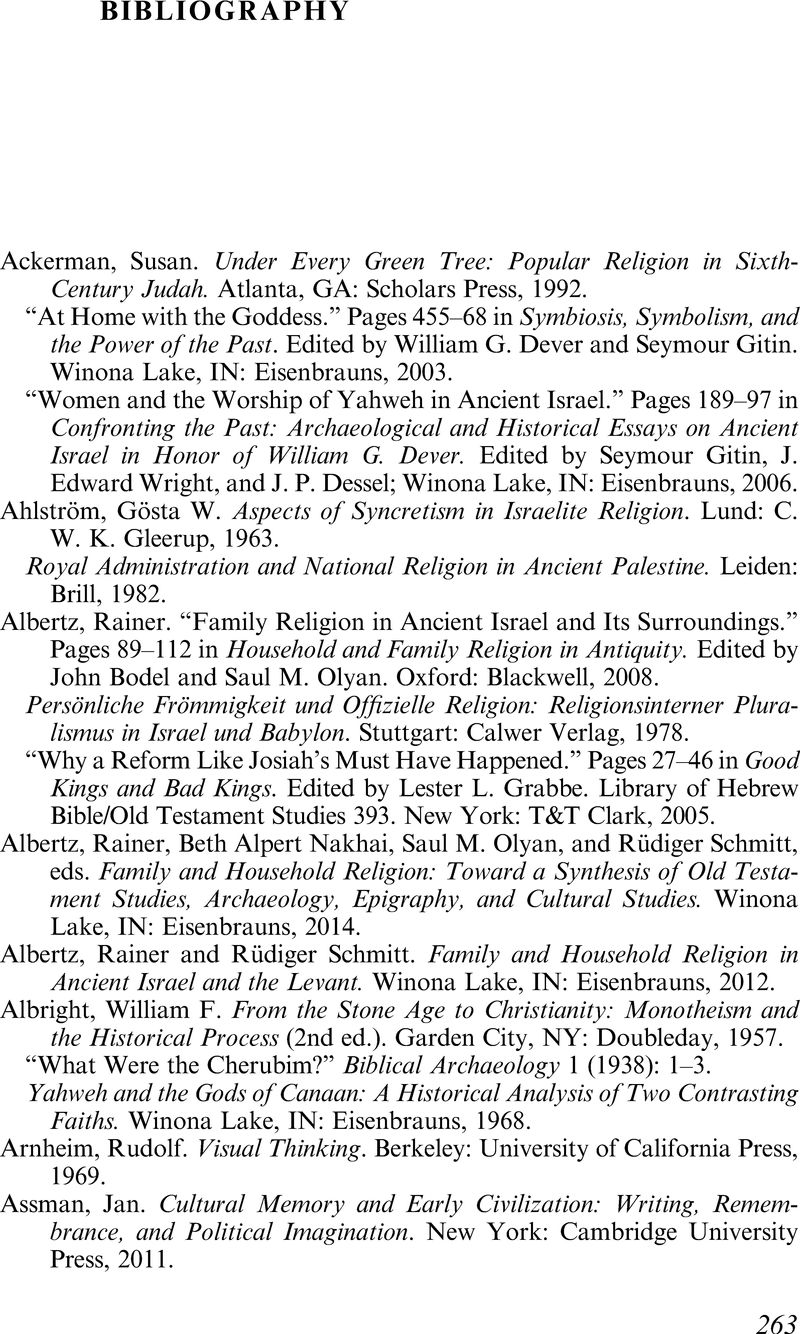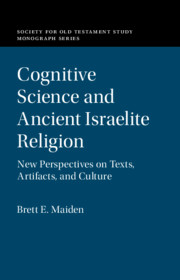Book contents
- Cognitive Science and Ancient Israelite Religion
- Society for Old Testament Study Monograph Series
- Cognitive Science and Ancient Israelite Religion
- Copyright page
- Contents
- Figures
- Tables
- Acknowledgments
- 1 Intuitive and Reflective Cognition, Optimal and Costly Religion
- 2 Rethinking the Popular–Official Religion Dichotomy
- 3 Deuteronomic Theology as Cognitively Costly Religion
- 4 Counterintuitive Mischwesen
- 5 On Artifacts and Agency
- 6 Ritual and Cognition in Leviticus 16 and the Day of Atonement Ritual
- 7 Conclusion
- Bibliography
- Index of Biblical Texts
- Subject Index
- References
Bibliography
Published online by Cambridge University Press: 17 September 2020
- Cognitive Science and Ancient Israelite Religion
- Society for Old Testament Study Monograph Series
- Cognitive Science and Ancient Israelite Religion
- Copyright page
- Contents
- Figures
- Tables
- Acknowledgments
- 1 Intuitive and Reflective Cognition, Optimal and Costly Religion
- 2 Rethinking the Popular–Official Religion Dichotomy
- 3 Deuteronomic Theology as Cognitively Costly Religion
- 4 Counterintuitive Mischwesen
- 5 On Artifacts and Agency
- 6 Ritual and Cognition in Leviticus 16 and the Day of Atonement Ritual
- 7 Conclusion
- Bibliography
- Index of Biblical Texts
- Subject Index
- References
Summary

- Type
- Chapter
- Information
- Cognitive Science and Ancient Israelite ReligionNew Perspectives on Texts, Artifacts, and Culture, pp. 263 - 290Publisher: Cambridge University PressPrint publication year: 2020

